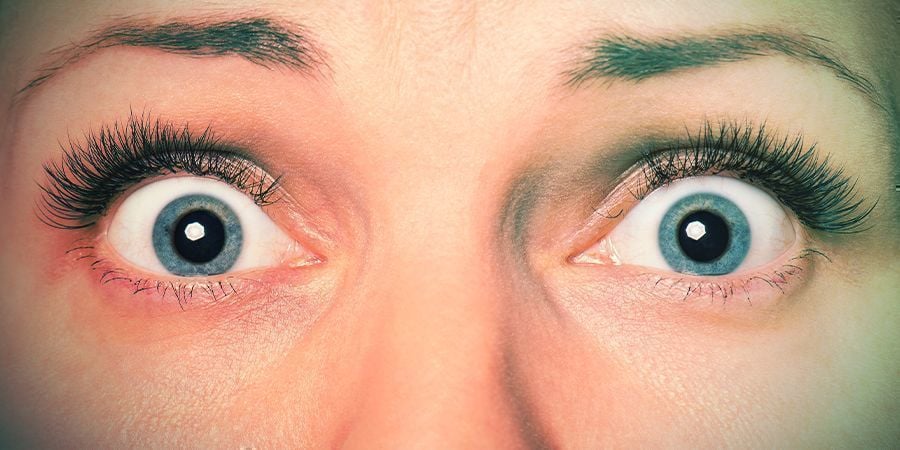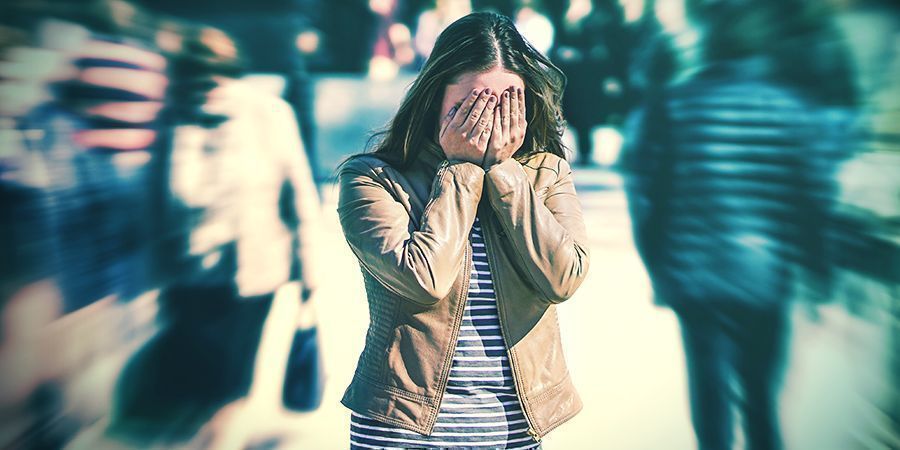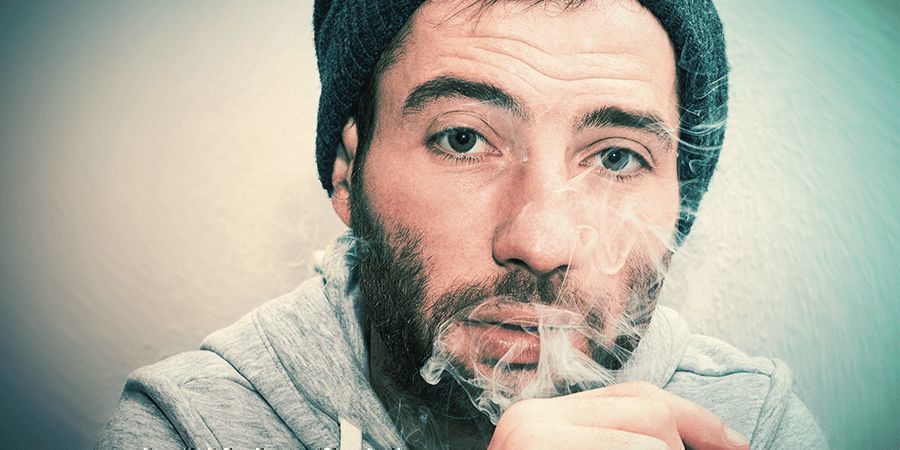What To Do When You Have A Bad Trip
Statistically, psychedelics are extremely safe. Knowing how to avoid a bad trip and knowing what to do when things do go wrong should be part of every psychonauts repertoire. Here are a few easy things to remember to keep safe.
On the cover of that famous guide for galactic hitchhikers, one may read, in big friendly letters, "Don't Panic!". And, there is the often recited cliché, "There's nothing to fear, but fear itself." Both are certainly true, but they can seem meaningless when your psychedelic of choice has taken a wrong turn on you. Anxiety or feelings of general distress may arise. Your psyche may seem to balance the edge of the abyss or your worst fears may seem to be coming true.
What Is A Bad Trip?

Bad trips are a real thing. The mind and imagination are powerful things when left au natural and unadulterated. Supercharged on psychedelics, some of them can give you a big scare. Psychotic breaks are also possible.
Firstly, there is no denying that bad trips occur. Although they are not anywhere near as prolific as the hysterical anti-drug media may have you believe. In fact, Dr Timothy Leary claimed that bad LSD trips were so rare as to be considered inconsequential. As with cannabis and mushrooms, the reports of bad trips are limited and their prolific occurrence is more to do with anti-drug hysteria than actual objective reporting.
"Bad trip" is a term that can cover a host of conditions. There can be mild anxiety and paranoia or full blown distressing hallucinations. Disassociation from reality can make some people feel that they are going insane or experience utter terror. Reactions can differ from individual to individual and from drug to drug.
Clinically a bad trip is considered to be a drug-induced temporary psychosis or psychedelic crisis. This condition can be caused by a number of compounds. For the sake of this article, we will exclusively look at psychedelics or hallucinogens that can cause a bad trip: Cannabis, magic mushrooms (psilocybin) and LSD.
WHAT CAN CAUSE A BAD TRIP?

Since hallucinogens incite a warped sense of reality, discomforting feelings experienced in this altered state may culminate in a bad trip.
- Time: The feeling of time can undulate from moving swiftly to standing still. This can bring immense discomfort to users who feel like the experience is never ending. If someone has a bad trip, it is helpful to remind them that he or she took a hallucinogenic drug and the effects will not last forever.
- Paranoia: Feelings can change rapidly when on hallucinogens. Emotions may quickly turn from positive to negative to positive again. If a person on a bad trip cannot be consoled due to their paranoia towards another, it may be beneficial to offer them a calm, quiet space to collect. Be sure to check back in with them from time to time, making sure they are as comfortable as possible.
- Hallucinations: When tripping, it is common to have visual and auditory hallucinations. Usually, users are aware of this before taking any drug. But during an uncomfortable trip, it may help to assure them that what is happening is normal and just another part of the experience.
HOW TO AVOID A BAD TRIP?
Once a person has taken a hallucinogen, they are basically locked-in for whatever experience comes their way. At least until the effects wear off. If a bad trip occurs, there are ways to turn the experience around. Usually, the most intense moment of an LSD trip occurs one to three hours after consumption. The whole experience can last anywhere from six to ten hours. The individual will most likely have a difficult time sleeping, so the best thing to do is to set up for a pleasant journey from the beginning. Take the time to create a space where the mind can wander in a positive environment.
Don’t drink alcohol. Alcohol has been known to decrease the hallucinogenic effects of LSD, but it can increase panic, anxiety and hostility. Avoid situations where these emotions can take place. If someone is on the verge of hurting themselves or others, call for help.
Have someone who is compassionate and understanding observe your trip. This person is usually sober and can be a helpful guide for anyone having a difficult time. A trip sitter is also a great way to keep the trip safe overall.
Be prepared to stay well hydrated and keep easy-to-prepare foods on standby. During a trip, it may not occur to you to eat and drink, but that doesn’t mean your body doesn’t need to. Hungry bellies and dry mouths can cause irritation and grump up the mood.
BAD TRIP ON WEED
Psychoactive hallucinogens, as magic mushrooms and LSD, are far more powerful than cannabis. They are also active considerably longer per dose compared to cannabis. However, cannabis can still cause psychic distress in some individuals. Especially with contemporary strains being so high in THC content, sometimes up to 30%.
A bad trip on weed may include amplified negative feelings or anxiety, paranoia or panic attacks. Symptoms may include racing heart, hot and cold sweats, tingling skin and difficulty communicating. Occasionally a very intense high can give the feeling of not being connected to the world. Most people enjoy this sensation where others can panic, as they feel they are losing control and don't know how to behave.
How to avoid?
Set and setting always play an important role when discussing drug use. Cannabis is no different. A friendly place with friendly people will unlikely generate scenarios that could induce a bad cannabis trip. Novices should take it easy with contemporary cannabis. Take small hits to begin with, just to test the waters. Even experienced aficionados are reporting anxiety like side-effects from potent modern weed. General health must always be a consideration. Get enough sleep, eat well and drink plenty of water. Missing any of the basics can set the scene for a negative reaction. Especially lack of sleep and hunger.
What to do?
Keep calm. Drink water and breathe consistently. Refrain from breathing too deeply as hypoventilation can trigger anxiety just as effectively as hyperventilation. If you are with friends you should be in safe hands. Talk it through. You might find benefit in expressing your state of mind and turn a negative into a positive. Caring vibes from people you know will help you feel safe. Music or movies you know and love are touchstones. Play or watch your favourites as calming reminders of the ordinary.
There is some good news for when a cannabis session goes wrong. By the nature of the compounds involved, it will all be over in 2 - 4 hours and you will undoubtedly go into a nice deep sleep afterwards.
BAD TRIP ON MAGIC MUSHROOMS (PSILOCYBIN)
.jpg)
Bad trips on magic mushrooms occur so infrequently that a bad trip is statistically hard to define. The nature of the experience itself is so intrinsically eschatologically satisfying that even novices report deep states of calm connectedness.
Typically set, setting and state of mind are also important factors when taking psilocybin. Feelings of depression or a negative mind frame may be amplified by psilocybin, causing distress. A higher than expected potency can lead to discomfort, but the nature of the compound does not promote panic or anxiety persé. However, intense and frightening hallucinations can occur, especially if tripping when already depressed or suffering anxiety. As with other psychedelics, there is always the chance that latent psychotic disorders may be triggered by the intensity of the hallucinogenic experience.
The worst trip would be a trip to the hospital with an acute case of poisoning. Misidentification can put more people in the hospital than bad trips. Many truly poisonous mushrooms resemble the wide variety of magic mushrooms that grow in the wild. Unless you are very sure please refrain from picking wild mushrooms, especially when easy-to-use grow kits of good quality mushrooms are prolific.
How to avoid?
Be absolutely, positively sure of what you are eating. Incorrect identification can put you in the emergency room. Trust your source about strengths and dosage, or take half then the other half an hour later after you can feel how strong they actually are. Be of a good frame of mind and be sure that you feel safe and empowered where you are. Looking after the general health side of things is a simple caution. Food, water and sleep make sure the brain and body function as they should.
What to do?
The tried and true methods frequently used to calm stress-and-anxiety-prone people work well. Talk gently and calmly. In an agitated hallucinatory state, words can be lost, but the calming tone will help them come down. Help them breathe evenly and to slow their heart rate. Remain calm and quiet, your secure presence and gentle voice will get a positive response.
BAD TRIP ON LSD

Statistically, LSD is similar to psilocybin when considering bad trips. Less than 1 in 1000 LSD trips could be considered bad. Set, setting and mood - again - play an important part in the LSD psychedelic experience. Emotions are intensified substantially and people suffering anguish or depression should avoid LSD unless under clinical supervision. Feelings of despair, hopelessness and other negative emotions are amplified by LSD and are triggers for a bad trip. Paranoia or the belief that they are dying can result from the panic that arises due to the intensity of the experience.
There is never any guarantee about the strength of LSD, nor is there any guarantee that what you have purchased is actually LSD at all. There is the danger of ingesting an unknown concoction of drugs made to mimic LSD, which can have dangerously adverse effects. Misinformation about strength can also lead to unintentional overindulgence where total loss of control may occur. There can be irrational beliefs about capabilities or one may become convinced that self-harm is the solution to some imaginary problem.
How to avoid?
Check and confirm your source. Make sure the LSD on hand is exactly that and not a mimic, and that it is reputably the strength as claimed. From the very beginning, when studying LSD, set and setting have played important roles in the appreciation of the experience. The father of LSD, Dr Albert Hofman, counselled that set and setting were of primary importance when planning an acid trip. So make sure your environment is as it should be prior to lift off.
What to do?
As mentioned with psilocybin, use a calm voice and gentle actions. Encourage steady breathing. Accidental overindulgence with heavy hallucinations can mean the person is beyond understanding you or their environment. Direct physical restraint may be needed to stop them from hurting themselves or others. If there is a lack of response to calming or an escalation in negative behaviour, then a medical visit is in order. Medical professionals will be able to administer appropriate and effective care.
Anyone, from a novice to an experienced user, can have a bad trip. This doesn’t mean that most trips end up this way or that the user did anything incorrectly. Just by taking a few precautions, staying well hydrated and self-aware, trips can be beneficial, regardless of the outcome.
-
 6 min
2 May 2025
How to prepare for a safe psychedelic trip
Psychedelic experiences benefit from knowledgeable and careful planning. It doesn't need to be over-the-top, but a little prep can make a trip absolutely wonderful. Find out how to prepare for a...
6 min
2 May 2025
How to prepare for a safe psychedelic trip
Psychedelic experiences benefit from knowledgeable and careful planning. It doesn't need to be over-the-top, but a little prep can make a trip absolutely wonderful. Find out how to prepare for a...
-
 3 min
29 October 2019
Magic Mushrooms Are The Safest Drug
A psilocybin trip can be fun and enlightening, but just how safe is it to trip on magic mushrooms? In this article, we’ll take a deep dive into the world of magic mushrooms, and show you just how...
3 min
29 October 2019
Magic Mushrooms Are The Safest Drug
A psilocybin trip can be fun and enlightening, but just how safe is it to trip on magic mushrooms? In this article, we’ll take a deep dive into the world of magic mushrooms, and show you just how...





 United States
United States













